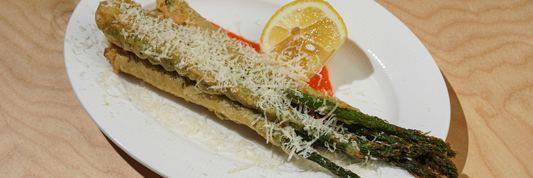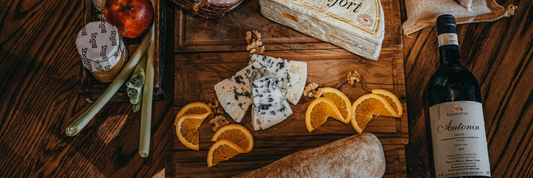Packaging fresh produce is an essential process that ensures the safety, quality, and longevity of fruits and vegetables from the moment they are harvested until they reach the consumer. This article explores why packaging is crucial, how to package fresh produce, and key considerations during the process.
- Food Packaging: What is it? The Role of Packaging in Food Preservation and Safety
- The History of Food Packaging: A Journey Through Time
- Top 5 Futuristic Food Packaging Technologies. What is the Future of Food Packaging?
- Smart Packaging For Food: Definition, Types, Benefits, Examples
Why Package Fresh Produce?

Packaging fresh produce serves several critical purposes:
- Protection: Prevents physical damage during transportation and handling.
- Preservation: Maintains freshness by controlling humidity and temperature.
- Hygiene: Shields are produced from contamination by microorganisms, dirt, chemicals, and other environmental factors. Ensure that the products remain in a hygienic environment during transportation, storage, and sale.
- Marketing: Provides a platform for branding and product information.
- Convenience: Facilitates easy handling, storage, and display in retail environments.
The Role of Ethylene Gas
Ethylene gas is a natural plant hormone produced by certain fruits and vegetables as they ripen. Items such as apples, bananas, and tomatoes emit high levels of ethylene, affecting the ripening and spoilage processes of neighboring produce. For effective packaging, it’s essential to differentiate between ethylene-sensitive and ethylene-producing items.
- For example, keeping ethylene-producing fruits away from ethylene-sensitive produce like strawberries can help reduce spoilage rates.
- When packaging, consider using ventilated containers that allow for proper air circulation and help manage ethylene levels in mixed produce shipments.
Fresh Produce is Alive and Respires
Fresh produce continues to 'breathe' even after being harvested. This respiration process involves the uptake of oxygen and the release of carbon dioxide, affecting the shelf life of the items. Increased respiration rates can lead to faster spoilage.
Sensible packaging solutions can help control this respiration:
- Utilize breathable materials that allow for gas exchange, such as perforated bags or containers.
- Avoid hermetically sealed options which can trap gases and lead to deterioration.

Choosing the Right Packaging Materials
Selecting the appropriate packaging materials is vital in preserving produce quality and minimizing waste. Here’s an overview of common options:
Corrugated Cardboard Boxes
Corrugated cardboard boxes are an affordable choice for bulk transport and storage, offering significant advantages.
- They provide ventilation, which helps in maintaining optimal temperature and humidity levels.
- Additionally, they are often made from recycled materials, supporting sustainability initiatives.
Plastic Containers (Clamshells, Trays, Bags)
Plastic containers like clamshells and trays are popular due to their visibility and versatility.
- They protect delicate items while allowing customers to see the contents, which can aid in sales.
- However, concerns about single-use plastics have led to an increased interest in sustainable alternatives.
Paper Bags and Pulp Containers
Paper bags and pulp containers are cost-effective options for packaging certain types of produce.
- Their breathable nature allows moisture absorption, which can help extend freshness for items like mushrooms.
- They are also considered eco-friendly, appealing to environmentally conscious consumers.
Mesh Bags
Mesh bags offer a unique way to package produce, promoting good airflow and visibility.
- This is particularly beneficial for items like onions and citrus fruits, which thrive in ventilated environments.
- However, mesh bags may not provide sufficient protection against physical damage, so careful consideration is required.
Biodegradable and Compostable Packaging
The demand for sustainable solutions has led to an exploration of biodegradable and compostable packaging materials.
- Options include materials like polylactic acid (PLA) derived from renewable sources.
- When considering these types of packages, it's essential to evaluate composting capabilities, as not all biodegradable materials break down under typical conditions.

Step-by-Step Guide: How to Package Fresh Produce for Different Needs
Packaging for Farmers Markets and Direct Sales
Creating an attractive presentation is key when packaging produce for farmers markets or direct sales.
- Focus on Visual Appeal: Use colorful and clean packaging that highlights the freshness of your produce. This could involve using clear containers that showcase the product inside.
- Small Quantities: Offer portions that are manageable for consumers, encouraging impulse buys. Smaller containers also allow for a variety of products in one purchase.
- Using Clear Containers and Attractive Labeling: Clear clamshell or plastic containers not only make the produce visible but also help in easy handling by customers. Incorporate handwritten or printed labels that detail the produce name, farm origin, and price.
- Handling and Transportation Tips: Ensure that produce is delicately handled during packing. Use coolers or insulated bags during transportation to maintain freshness, especially on hot days.
Packaging for Long-Term Storage at Home
When it comes to extending the lifespan of fresh produce at home, correct packaging is crucial.
- Preparing Produce for Storage: Start by washing fruits and vegetables to remove dirt. Make sure to dry them thoroughly to avoid moisture buildup, which can lead to spoilage.
- Utilizing Airtight Containers and Proper Ventilation: Use airtight containers for produce that tends to lose moisture, like strawberries. Meanwhile, foods like leafy greens benefit from breathable bags that allow for air circulation.
- Temperature and Humidity Control: Store produce in a cool, dark place, ideally in the refrigerator for many types. Maintaining proper humidity levels will also help keep them fresh for longer.
Packaging for Shipping and Transportation
Shipping requires extra consideration to prevent damage during transit.
- Ensuring Protection Against Physical Damage: Utilize sturdy boxes and padding materials that can absorb shocks. This is essential for fragile items like tomatoes or avocados.
- Temperature-Controlled Packaging Options: Depending on the type of produce, consider using refrigerated transport or insulated boxes that maintain temperature during transit.
- Labeling and Handling Requirements for Shipping: Clearly label the boxes with handling instructions. Use "Fragile" and "This Side Up" stickers to minimize rough handling.
Packaging Specific Types of Produce
Different types of produce require tailored packaging solutions.
Berries
Gentle handling is crucial for berries to avoid squishing.
- Clamshell Containers: These are often recommended as they provide both protection and ventilation.
- Moisture Control: Ensure berries are dry before packaging to prevent mold from forming.
Leafy Greens
To keep leafy greens fresh and crisp, proper moisture management is vital.
- Maintaining Moisture: Store them in a slightly damp paper towel inside a plastic bag or an airtight container, keeping them chilled in the refrigerator.
Root Vegetables
Root vegetables are resilient but need protection from light.
- Protection from Light and Moisture: Store them in opaque bags or containers to avoid greening and spoilage.
Fruits (Apples, Pears, etc.)
Handling techniques can make a significant difference in how fruits retain their quality.
- Preventing Bruising: Fruits should be cushioned with materials such as foam or biodegradable packing peanuts, especially during shipping.
Herbs
Herbs are delicate and need specific care.
- Keeping Them Hydrated: Store herbs in a damp paper towel and place them in a container that allows for airflow to prolong their freshness.

Best Practices for Extending Shelf Life Through Packaging
Modified Atmosphere Packaging (MAP)
MAP involves altering the atmosphere inside the package to extend shelf life.
- How MAP Works: It maintains the freshness of produce by controlling oxygen, carbon dioxide, and humidity levels inside the packaging.
- Benefits for Specific Types of Produce: MAP is especially beneficial for fragile items like berries and leafy greens.
Humidity Control
Maintaining optimal humidity levels can prevent breathing and wilting in produce.
- Using Moisture-Absorbing Materials or Films: Keep out excess moisture by incorporating materials that absorb humidity or breathable films.
Temperature Management
Temperature is a critical factor in preserving the freshness of produce.
- The Role of Cold Chain in Preserving Freshness: Keep produce at the recommended temperatures from farm to consumer, employing insulated packaging options to manage heat.
Proper Sealing and Handling
To preserve quality, careful sealing is essential.
- Preventing Contamination and Damage: Use sanitary practices while packaging to avoid contamination. Teaching staff about gentle handling techniques is also vital.
Sustainability in Fresh Produce Packaging
The environmental impact of traditional packaging materials is significant, prompting the need for sustainable choices.
- Exploring Eco-Friendly Alternatives: Materials such as biodegradable plastics and compostable containers are gaining popularity. Consider options that are made from recycled materials.
- Reducing Packaging Waste Through Innovative Designs: Focus on creating designs that minimize waste and encourage reuse or composting.
- Consumer Preferences for Sustainable Packaging: Many consumers prefer brands that prioritize sustainability, making eco-friendly packaging not just a choice but a business imperative.
Conclusion
Effective fresh produce packaging requires careful consideration of materials and methods tailored to specific needs. By adopting best practices, you can ensure that your produce stays fresher and safer for consumers. Be proactive in making choices that not only benefit your products but also contribute to environmental sustainability.
FAQ
Q1: What is the best packaging for keeping berries fresh?
A: Clamshell containers are often recommended as they provide protection and ventilation. Ensure berries are dry before packaging to prevent mold.
Q2: How can I package leafy greens to prevent wilting?
A: Wash and thoroughly dry leafy greens. Store them in a slightly damp paper towel inside a plastic bag or airtight container in the refrigerator.
Q3: What are some sustainable options for packaging produce at a farmers market
A: Consider using biodegradable paper bags, reusable mesh bags, or compostable containers. Encourage customers to bring their own bags.
Q4: Is it better to store fruits and vegetables together or separately?
A: It's generally better to store them separately, especially fruits that produce ethylene gas, as this can cause vegetables to spoil faster.




